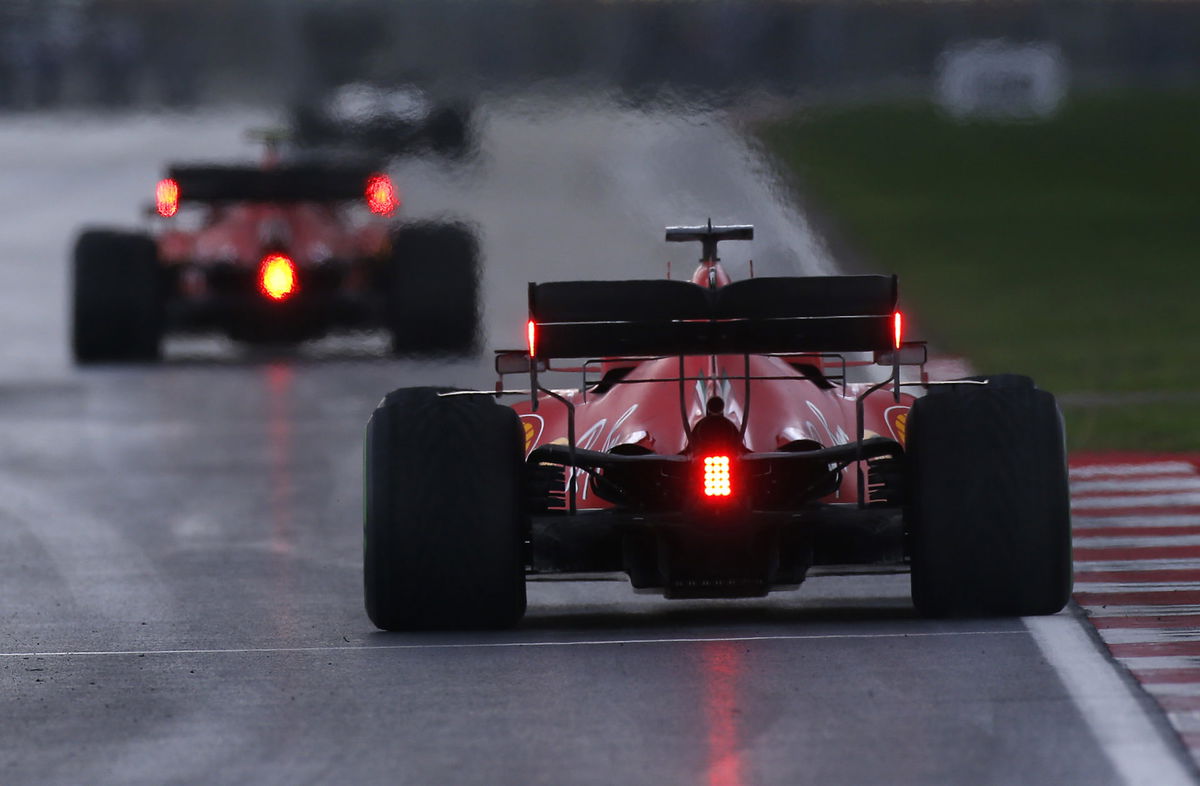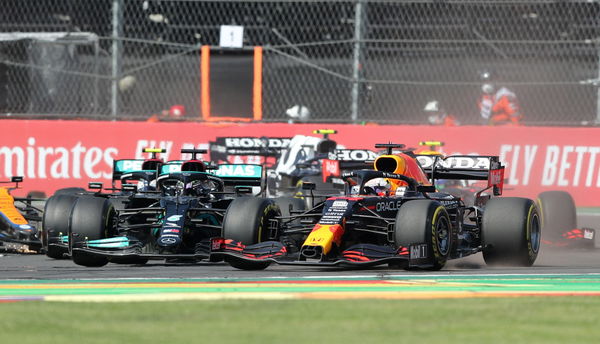
Reuters
Formula One F1 – Turkish Grand Prix – Istanbul Park, Istanbul, Turkey – November 15, 2020 Ferrari’s Sebastian Vettel in action during the race REUTERS/Kenan Asyali

Reuters
Formula One F1 – Turkish Grand Prix – Istanbul Park, Istanbul, Turkey – November 15, 2020 Ferrari’s Sebastian Vettel in action during the race REUTERS/Kenan Asyali
Engineers design F1 cockpits with hi-tech concepts and incredible details. The features of the cars are for various requirements, and thus, F1 cockpits differ from regular cars to a great extent. Though the mechanism for crafting the cockpit can still be kept on a single page, the goals of crafting the F1 chassis and hood are entirely different.
Watch What’s Trending Now!

Reuters
Formula One F1 – Turkish Grand Prix – Istanbul Park, Istanbul, Turkey – Racing Point’s Lance Stroll and McLaren’s Carlos Sainz Jr. in action during the race REUTERS/Ozan Kose
Along with other features, there are lights attached at the rear end of the cars. The lights at the back of the car blink red for particular reasons. They are attached to the car at an angle and at a distance of 30 centimeters from the ground. The main motive of the lights is to abide by safety measures and avoid disastrous accidents in the circuit.
ADVERTISEMENT
Article continues below this ad
Why do the lights at the back of an F1 car blink?
Three major reasons require the red light to flash in the race. When it rains amidst the race, further making the circuit slippery and wet, the rear light blinks in every cockpit. Moreover, every racer faces visibility difficulties, and the motor mechanism gets tested considerably.
ADVERTISEMENT
Article continues below this ad
Hence, when they can’t clearly see the cars ahead of them, the red rear light acts as a savior. The racers then keep the light on constantly, without blinking, for safety and precautionary reasons. Further, the management crew of the particular racing teams assists the racers over the radio. The racers abide by the instructions given by their team management.
Subsequently, the F1 cockpits have additional lights attached in the rear wing as well. They, too, help boost the visibility of the racers on the track. Furthermore, the rear red lights have a warning function too.

Reuters
Formula One F1- Saudi Arabian Grand Prix – Jeddah Corniche Circuit, Jeddah, Saudi Arabia – December 4, 2021 General view as the cars exit the pit lane during qualifying Pool via REUTERS/Giuseppe Cacace
In pleasant weather, when the red light flashes in any cockpit, it indicates that the car is moving at a relatively slower pace than usual. It is because of the harvesting of energy with ERS. When the cockpit brakes a little heavier and slows down flashing the red lights, the racer behind the cockpit takes the sign and moves past the one with the blinking light. The racers, usually after facing engine problems or certain cockpit issues, move to the side of the track or slow down in order to avoid car wrecks. When the following cockpits notice such a scene taking place, they keep their distance and drive past the car.
ADVERTISEMENT
Article continues below this ad
Read More – Who Owns the Red Bull F1 Team?
There are instances when the racers slow down on the track without flashing the red light, which can lead to various car wrecks. Further, the car goes through an FIA investigation. If found guilty of slowing down without reason, the driver faces a five-second penalty.
Why was it introduced?
Well, the red lights at the back of F1 cars are a part of the safety features of the FIA’s regulation. The sport was turning too risky for the drivers, be it in the wet or in the dry.
And amidst the sport’s desperate move to safeguard their drivers following one too many near misses and casualties over the preceding years, the introduction of red lights seemed quite mandatory.
What is the MGU-H system?
MGU-H basically stands for Motor Generator Unit – Heat. As the name suggests, MGU-H captures the thermal energy generated from the exhausts of the F1 cars. Consequently, the energy that’s retrieved by the MGU-H is fed directly to the MGU-K.

Reuters
Formula One F1 – Mexico City Grand Prix – Autodromo Hermanos Rodriguez, Mexico City, Mexico – November 7, 2021 Red Bull’s Max Verstappen leads the Mexico City Gran Prix in the first lap REUTERS/Andres Stapff
ERS (Energy Recovery System), meanwhile, controls the flow of energy. This is where the red lights come into play! When the red light begins to flash on the back of a car, the driver behind would know that the car ahead is harvesting energy, meaning, the car would be much slower and more vulnerable.
For instance, the 2016 Spanish GP had a similar incident. During the race start, Rosberg found himself leading the race from Hamilton. And just after reaching turn 2, Rosberg’s car began harvesting energy. Lewis Hamilton noticed the bright red light flashing at the back of his rival’s Mercedes and attempted to claim the race lead. Unfortunately, the pair collided and took each other out of the race.
When does it flash green?
The final type of rear light flashes green. When the racers are new to the F1 racing grid, the green rear light flashes. It indicates that the racer owns no Certificate of Super License, issued by the FIA. Thus, the green light works its wonder by informing other racers about the rookie on the ground.
Crafted with innovative technologies, the F1 car rear lights can resist extremes of conditions. They are water-resistant and exceptionally strong, which prevents them from breaking easily. The red rear lights of the F1 cockpits have successfully avoided numerous dreadful accidents. Thus, they are one of the most important features of the F1 cockpit.
WATCH THIS STORY: The Best F1 Themed Movies
ADVERTISEMENT
ADVERTISEMENT
ADVERTISEMENT
ADVERTISEMENT

